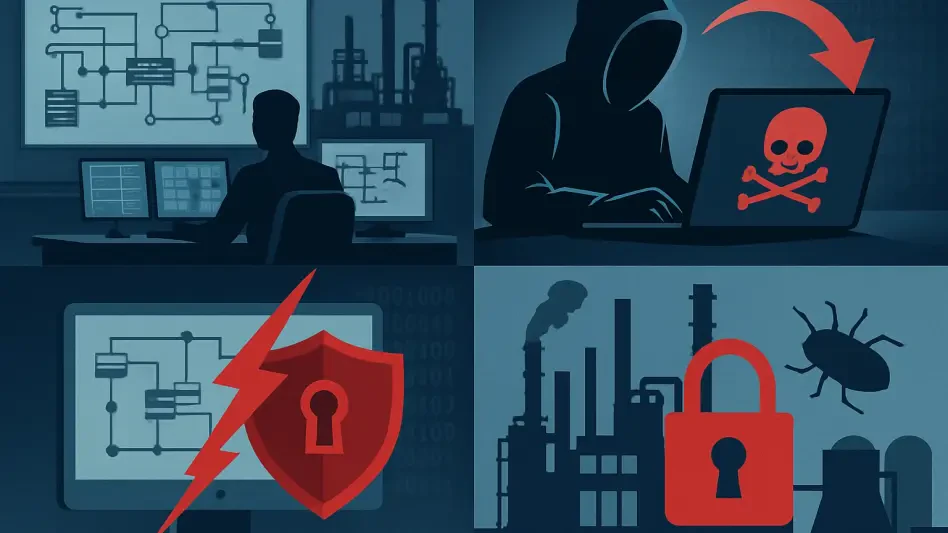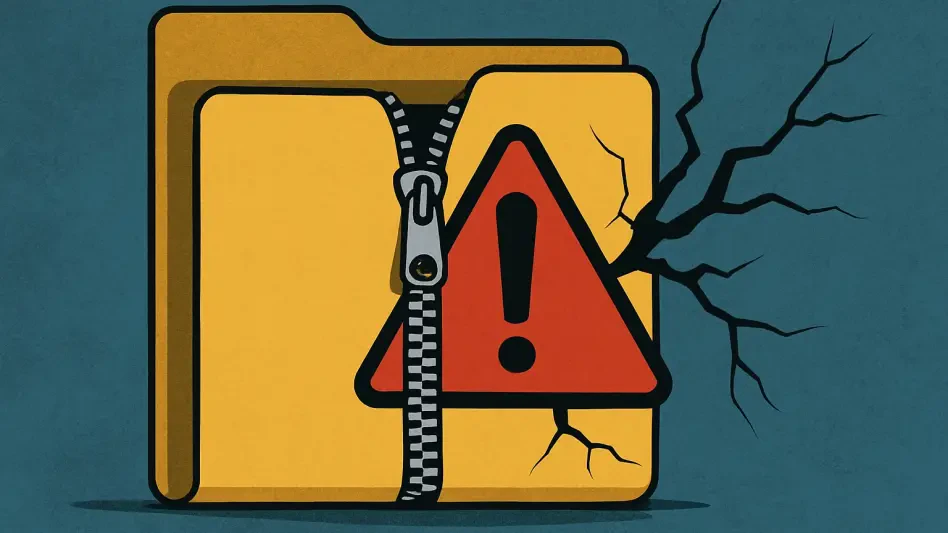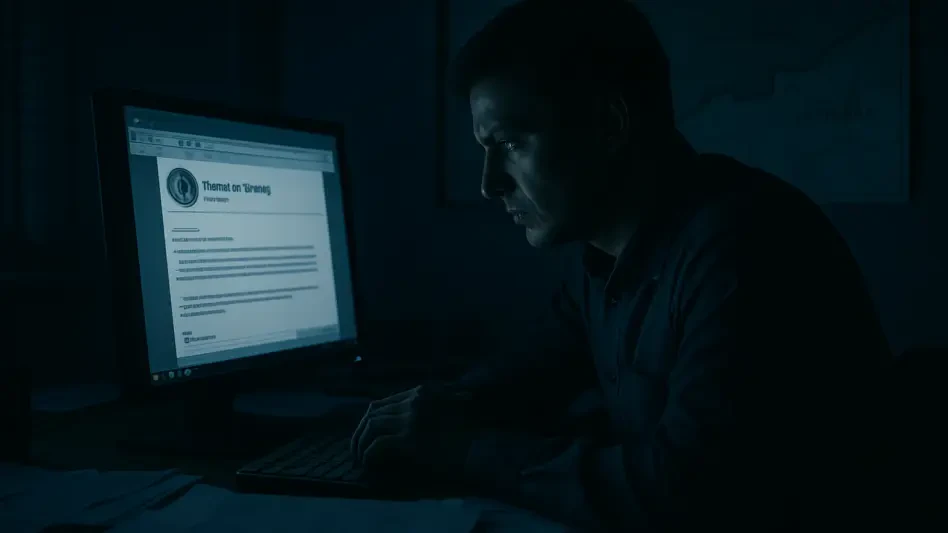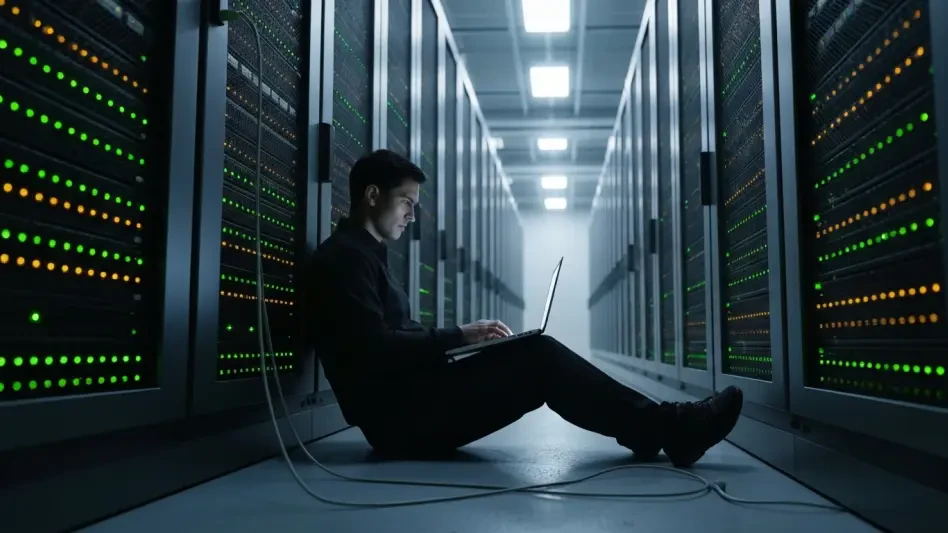The industrial world stands at a critical juncture, with 22% of organizations reporting cyberattacks on their industrial control systems (ICS) and operational technology (OT) environments in the past year alone, highlighting a growing vulnerability. These systems, which underpin vital infrastructure like power grids and manufacturing plants, are increasingly intertwined with IT networks, exposing them to sophisticated threats that can halt operations or endanger public safety. This roundup gathers diverse perspectives, tips, and analyses from industry experts to unpack the latest findings from a prominent cybersecurity survey. The purpose is to illuminate the pressing challenges in securing ICS/OT environments, compare differing views on solutions, and provide actionable insights for stakeholders aiming to fortify their defenses.
Exploring the Threat Landscape in Industrial Cybersecurity
Incident Trends and Operational Impacts
A significant concern echoed across expert opinions is the persistent rise in cyber incidents targeting industrial environments. Data indicates that 40% of affected organizations faced operational downtime due to these attacks, underscoring the tangible consequences beyond mere data breaches. Many specialists highlight that while detection has improved—with half of incidents identified within 24 hours—the recovery phase often drags on, with nearly one in five cases taking over a month to resolve.
Another angle brought forth by industry observers focuses on the cascading effects of prolonged disruptions. When operations grind to a halt, the ripple effects can impact supply chains, safety protocols, and even regulatory compliance. There is a consensus that current defenses, though quicker at spotting threats, still fall short in minimizing real-world harm, prompting calls for more robust recovery frameworks.
A differing perspective emphasizes the need to contextualize these statistics by industry. Sectors like energy and utilities often face more severe downtime impacts compared to less time-sensitive manufacturing fields. This variation suggests that tailored incident response plans, rather than one-size-fits-all approaches, might be necessary to address specific operational risks effectively.
Remote Access as a Critical Vulnerability
Across multiple analyses, unauthorized remote access emerges as a dominant weak spot, accounting for half of all reported incidents. Despite heightened awareness, only a small fraction of organizations—about 13%—have implemented stringent controls like session recording. Experts point out that barriers such as legacy system incompatibilities and resource shortages hinder progress, with 60% citing a lack of internal capacity as a primary obstacle.
Some voices in the field stress the visibility gap as a compounding issue. With nearly one-third of surveyed entities lacking a centralized inventory of remote access points, the attack surface remains dangerously uncharted. This blind spot heightens risks from threats like ransomware, which can exploit unsecured entry points to devastating effect.
Conversely, a few specialists argue that the focus on remote access might overshadow other vulnerabilities, such as insider threats or unpatched systems. While acknowledging its significance, they advocate for a more balanced approach to risk assessment, ensuring that resources aren’t disproportionately funneled into one area at the expense of overall security posture.
Preparedness and Defensive Strategies
Readiness Levels and Proactive Measures
Preparedness for emerging cyber threats reveals a fragmented landscape, with only 14% of respondents feeling fully equipped to handle new challenges. Many experts commend the growing adoption of proactive tools like threat intelligence, utilized by over two-thirds of organizations, as a step toward anticipating rather than just reacting to attacks. This shift signals a maturing mindset in industrial cybersecurity.
Regional and industry-specific disparities also draw attention from analysts. Regulatory adoption varies widely, with some areas enforcing stricter compliance than others, often leaving smaller entities struggling to keep pace. Planned investments in threat detection, projected by 43% of organizations for the next couple of years through 2027, are seen as a positive trend, though implementation consistency remains a concern.
A contrasting viewpoint challenges the reliance on technology as the sole solution. Several thought leaders emphasize that hands-on training with frontline staff significantly boosts confidence levels, often more than tech investments alone. This human-centric approach, they argue, is critical to bridging readiness gaps that tools cannot fully address.
Regulatory Dynamics and Investment Focus
Regulations play a dual role in shaping ICS/OT security, with over half of facilities under mandatory compliance rules, yet a quarter facing potential violations, especially among smaller operations. Experts generally agree that while these mandates drive improvements in detection and response, they can also strain limited budgets, creating a compliance-versus-capability tension.
Investment priorities offer another point of discussion, with asset visibility and secure remote access topping the list at 50% and 45% respectively for the current year. Some industry watchers advocate for broader adoption of automation tools like security orchestration to streamline responses, though others caution that such technologies require significant expertise and may not suit every organization’s needs.
A unique perspective suggests that regulatory baselines could evolve into strategic catalysts over time. If compliance fosters a deeper cultural shift toward cybersecurity maturity, it might redefine how organizations allocate resources and prioritize risks, potentially transforming mandates from burdens into competitive advantages.
Strengthening Industrial Defenses: Collective Wisdom
Drawing from various insights, the slow pace of remediation after incidents stands out as a universal lesson for industrial stakeholders. Many recommend prioritizing comprehensive asset inventories to map out vulnerabilities systematically. This foundational step is seen as non-negotiable for reducing blind spots in sprawling ICS/OT networks.
Another widely endorsed tip is enforcing multifactor authentication across all access points, particularly for remote connections. This relatively straightforward measure can significantly curb unauthorized entry, yet its adoption remains inconsistent. Experts also stress integrating field staff into regular drills, as their operational knowledge often proves invaluable during real incidents.
A final piece of advice focuses on aligning security investments with specific operational gaps, such as those at lower levels of industrial system hierarchies. Leveraging threat intelligence feeds, already used by nearly 80% of surveyed entities, can provide actionable data to guide these efforts. This strategic alignment ensures that resources target the most critical areas of exposure.
Reflecting on Shared Insights and Next Steps
Looking back on this roundup, the collective input from diverse industry perspectives painted a complex picture of ICS/OT cybersecurity challenges. The alarming frequency of incidents, persistent remote access vulnerabilities, and uneven preparedness levels highlighted the urgency of addressing these issues. Differing views on balancing technological and human-centric solutions enriched the discussion, offering a multifaceted approach to building resilience.
For organizations moving forward, a key takeaway was the importance of accelerating recovery processes alongside detection efforts. Investing in cross-functional training emerged as a powerful tool to enhance readiness, while strategic compliance could serve as a springboard for long-term maturity. Stakeholders are encouraged to explore further resources on threat intelligence integration and regulatory best practices to stay ahead of evolving risks, ensuring that industrial infrastructure remains secure in an increasingly connected landscape.








